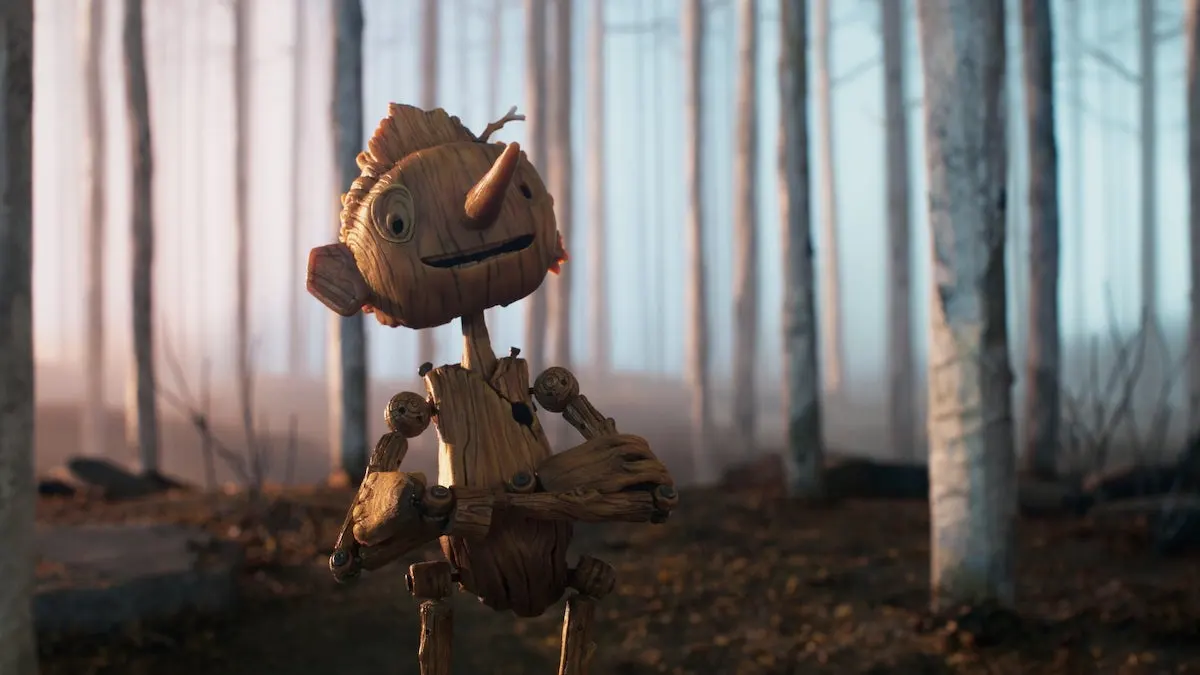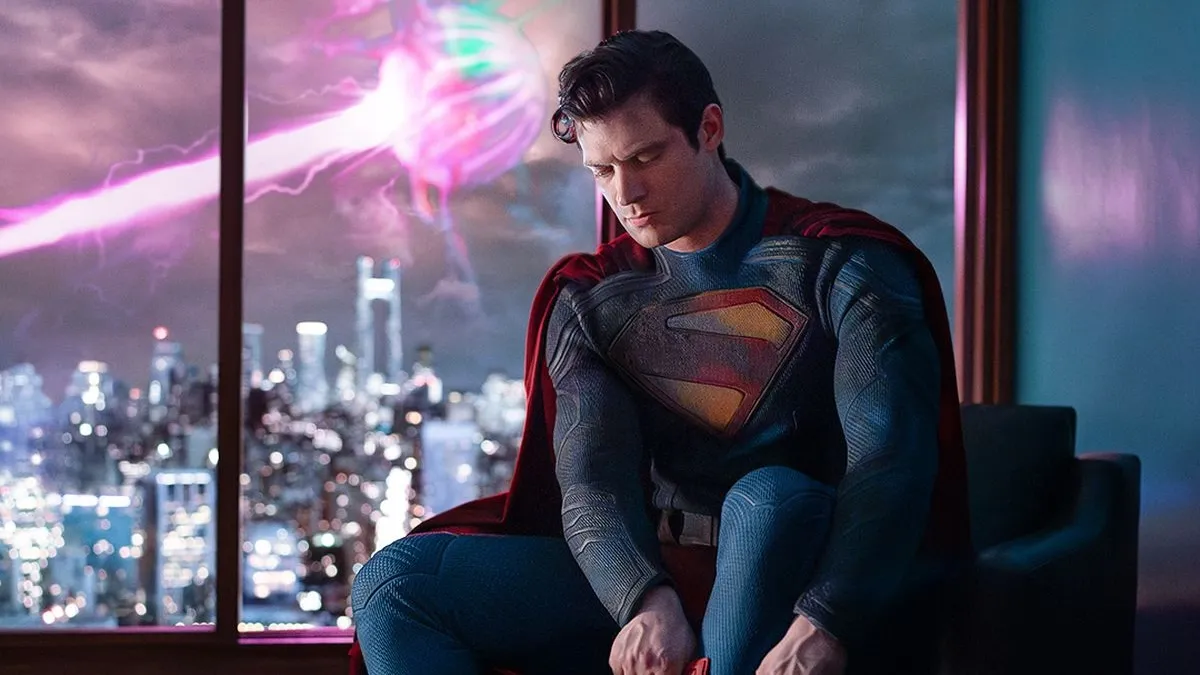Guillermo del Toro has developed a cinematic style that can only accurately be described as Gothic-inspired, Fabergé-influenced, folk-punk-horror fantasy. His emotional intelligence and thematic complexity are uniquely Mexican, yet also captivatingly global. Here are all of his films to date, ranked in order of artistic merit and rewatchability.
12. Blade II (2002)
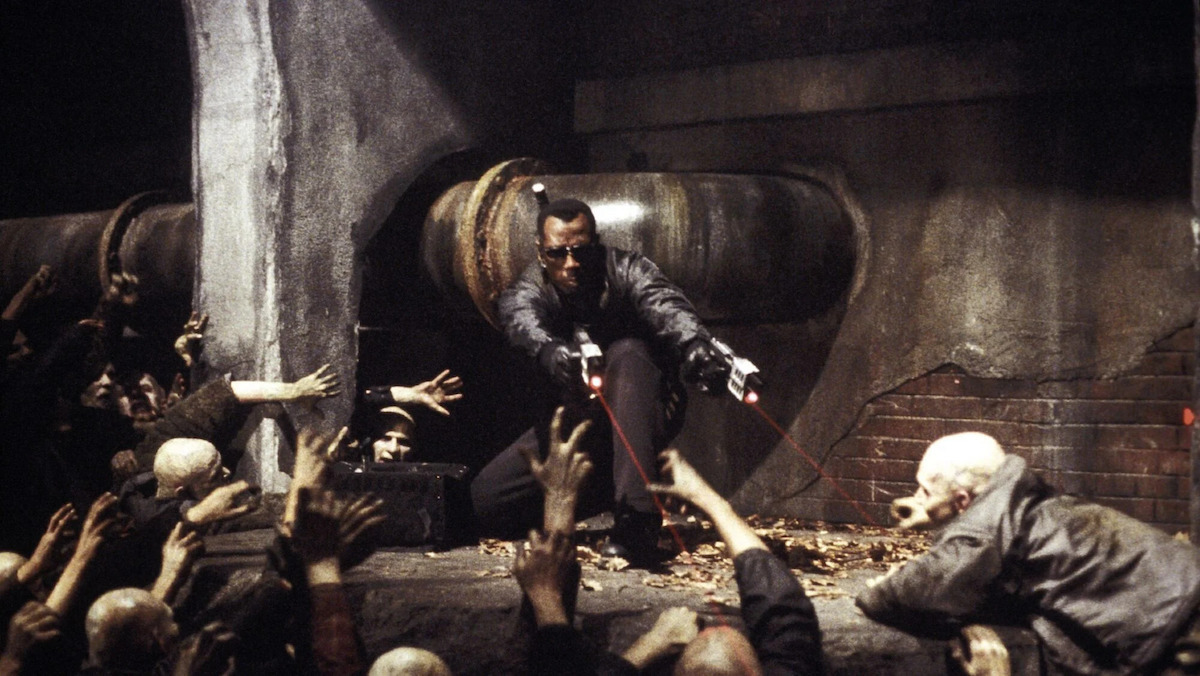
The second of three films based on the Marvel Comics character Blade, Blade II follows a human-vampire hybrid in his ongoing quest to protect humanity by hunting vampires. He encounters a group of mutant vampires who want to exterminate not only vampires, but also humans, and the sword-forward fight scenes ensue. But like the many (arguably too many) Alien and Predator films, it can be an exercise in confusion when every installment of a series is directed by a different filmmaker, each with their own creative vision for the franchise.
Blade II was a box office success, likely because of the appeal of Wesley Snipes in the early 2000s, but its critical response was tepid. There’s not a lot of character development here, and vampire-hunting stories are often replete with clichés. But even after 20 years, the strong performances, elegant use of light and shadow, and fight choreography by Donnie Yen make this the strongest installment in the series.
11. Pacific Rim (2013)
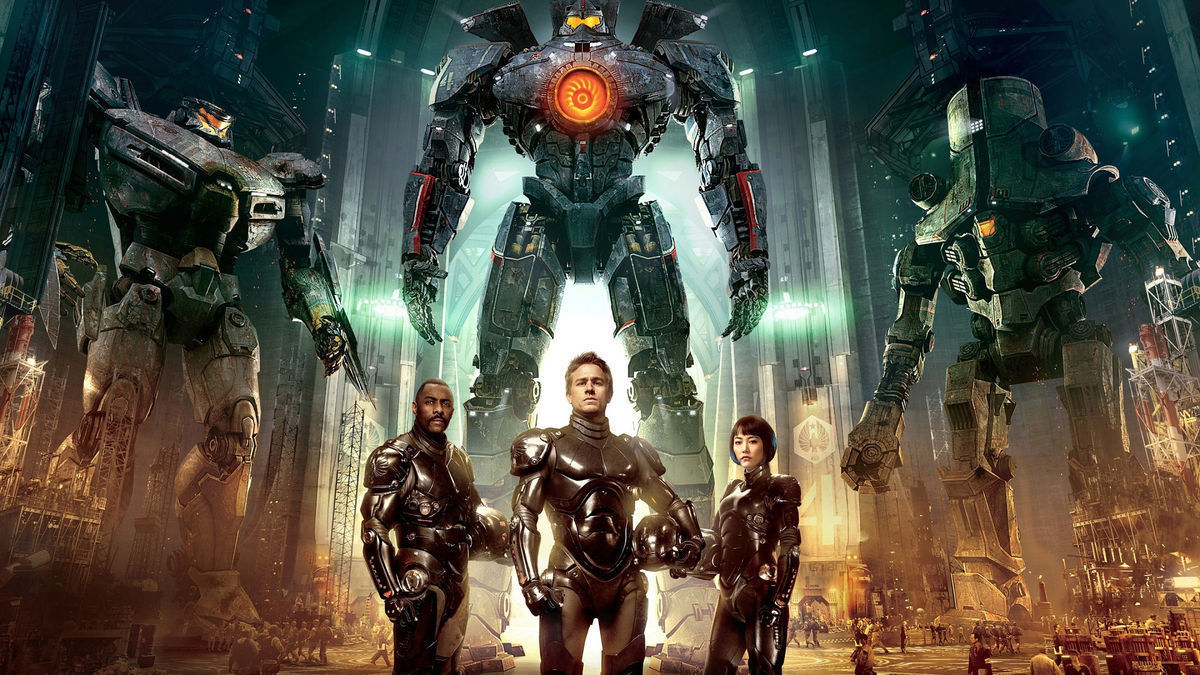
The only del Toro film that can be clearly categorized as science fiction, this homage to kaiju films of the 1950s and ‘60s and mecha anime of the 1980s and ‘90s was his most commercially successful feature. But it remains the least connected to the rest of his filmography, aesthetically speaking.
Beyond obvious references to Godzilla and Neon Genesis Evangelion, there are also nods to Independence Day, Star Wars, and 2001: A Space Odyssey, and more subtle homages to the fiction of Philip K. Dick, Ray Bradbury, H.P. Lovecraft, and Mary Shelley. All these references sometimes make Pacific Rim more like a seek-and-find game for geeks than a memorable narrative in its own right. Its story of a disgraced ex-pilot (Charlie Hunnam) forming a human dyad with a recent trainee (Rinko Kikuchi) to use an obsolete model of a giant robot in order to defeat a horde of gigantic monsters forever (until the sequel) is authentically emotional and engaging at points. But its big budget production design recalls the numbing visual complexity of Michael Bay’s Transformers more than it does the thoughtful analog curios of del Toro’s other work.
10. Mimic (1997)
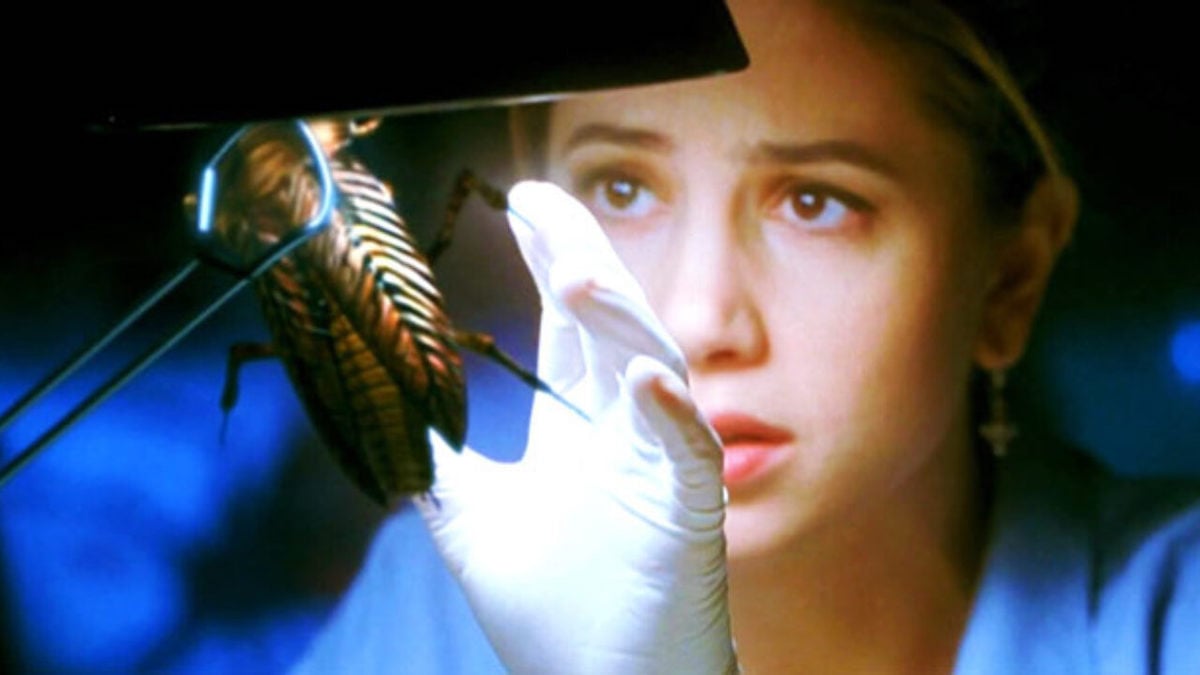
Based on a short story by Donald A. Wollheim, Mimic was adapted by Guillermo del Toro and Matthew Robbins. This hybrid of science fiction and horror continues to develop the painterly visual style del Toro established four years earlier in his debut feature Cronos.
In Mimic, a plague that affects children spreads through Manhattan by way of cockroaches. The always underrated Mira Sorvino (Romy and Michele’s High School Reunion, Summer of Sam) plays a graduate student who harnesses genetic engineering to create a half-mantis, half-termite insect that can mimic cockroaches in order to infiltrate their spaces and kill them before they can spread any more disease. Although these hybrid insects were engineered to be sterile, they evolve into large predatory creatures that give new meaning to their nickname “Judas Breed” (after the Biblical traitor). Throughout the film, del Toro shows his gift of pacing, lighting, and working with performers to bring out their most naturalistic performances. Sorvino is supported by Josh Brolin, Charles S. Dutton, and F. Murray Abraham in a film that counterbalances hideousness with beauty that it is as contemplative as it is unnerving.
9. Nightmare Alley (2021)
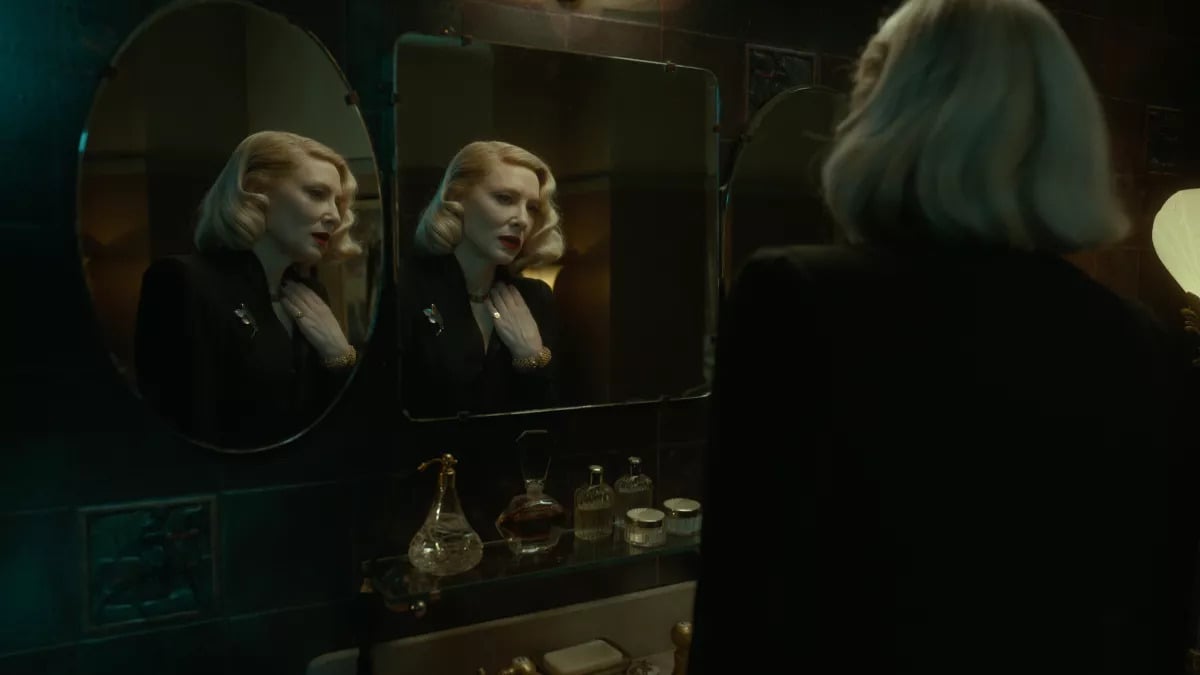
Based on a novel by William Lindsay Gresham, this psychological thriller is the only Guillermo del Toro film with no fantasy or supernatural elements. This is the second adaptation of Gresham’s novel (the first was in 1947), and del Toro reinforces its noir conventions with elements of an oddball underworld shot in his unequivocal style. The plot follows a drifter (Bradley Cooper) who becomes a psychic medium and unexpectedly meets a psychologist (Cate Blanchett) who wants to expose him as a fraud. Blanchett and Cooper are supported by a strong cast that includes Toni Collette, Willem Dafoe, and Rooney Mara. Production was shut down in 2020 because of the COVID-19 pandemic, and the film ultimately took more than two years to complete. Despite an affectionate response from critics, and a direct recommendation from Martin Scorsese, Nightmare Alley earned only $39.6 million against its $60 million budget. And whenever a beloved creator ventures outside their aesthetic realm (e.g., the non-fantastical Hayao Miyazaki films), the result not only defies audience expectations, but risks becoming lesser-known in their canon.
8. Cronos (1992)
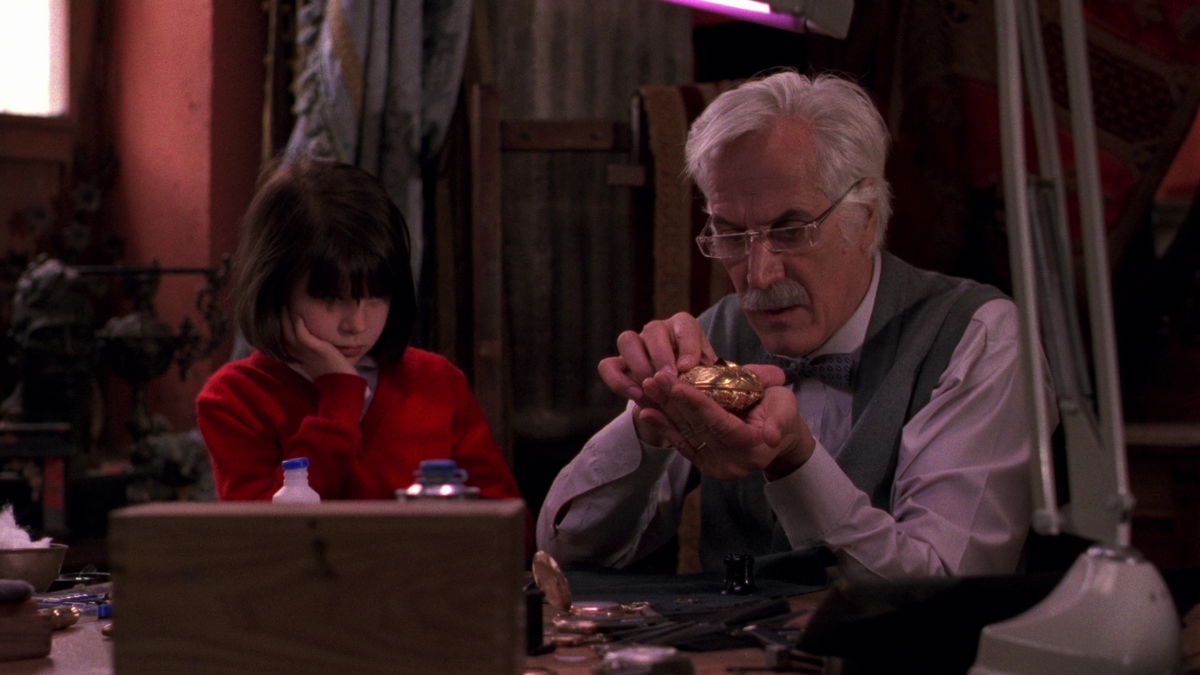
The independently financed horror drama Cronos was Guillermo del Toro’s first feature film. Inspired as much by Latin American magical realism as it is by classic vampire cinema, this story examines the effects of a wind-up device that grants its wearer immortality. The plot follows the device—invented by an alchemist in Spain in 1536, and worn by him until his death in 1937—to an antique shop in Mexico in 1996. The device is purchased by an antiques dealer named Jesús Gris (Federico Luppi), who unknowingly activates it. He regains his health and vitality, but also develops a taste for blood, until his granddaughter Aurora (Tamara Shanath) helps find a way to free him from it. Mythological themes are counterbalanced by understated performances in the film that established del Toro as a writer and director of Gothic horror with a compassionate heart.
Although originally released in only two theaters in North America, Cronos went on to win the International Critics’ Week grand prize at the Cannes film festival in 1993 and nine Ariel Awards from the Mexican Academy of Film. It is now part of The Criterion Collection’s Trilogía de Guillermo del Toro series with del Toro’s other Spanish-language films, The Devil’s Backbone (2001) and Pan’s Labyrinth (2006), and features cover art by Hellboy creator Mike Mignola and comics artist Becky Cloonan.
7. Hellboy (2004)
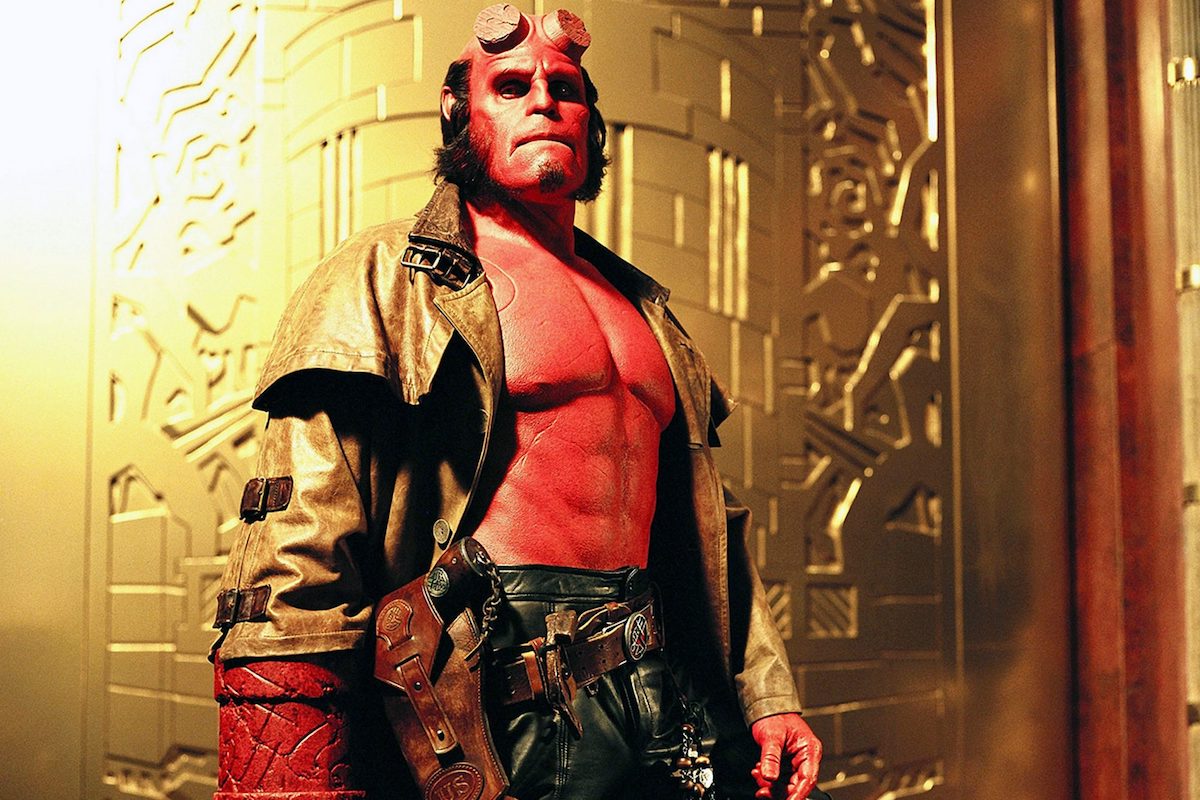
In his audio commentary for the Director’s Cut DVD, del Toro explains that he chose Ron Perlman for the title role in his live-action adaptation of the Hellboy comic book because he knew Perlman could deliver subtlety and nuance, even under so much make-up. From his first appearance onscreen, it was obvious del Toro found the perfect performer to bring the character to life. Perlman has performed in seven of del Toro’s 12 films to date, but his role as Hellboy in two of them remains his most iconic.
Mike Mignola’s wildly imaginative—though still intellectually sound—story involving Nazis, the occult, portals to Hell, and the value of staying authentic to yourself in defiance of societal expectations translates well to film. Based on the plot of Hellboy: Seed of Destruction (Volume 1 in the Dark Horse Comics series), the film co-stars Selma Blair as the pyrokinetic Liz Sherman, Doug Jones as amphibious humanoid Abe Sapien (and an uncredited David Hyde Pierce as his voice), and John Hurt as Trevor Bruttenholm, the director of the Bureau of Paranormal Research and Defense. The performances are earnest yet relaxed, and never bombastic despite the fantastical setting. The narrative musing “What makes a man a man?” is a theme del Toro revisits in the sequel to Hellboy, as well as his adaption of Pinocchio. Masculine though the framing of this question may be, the answer could apply to anyone: “It’s the choices he makes.”
6. Hellboy II: The Golden Army (2008)
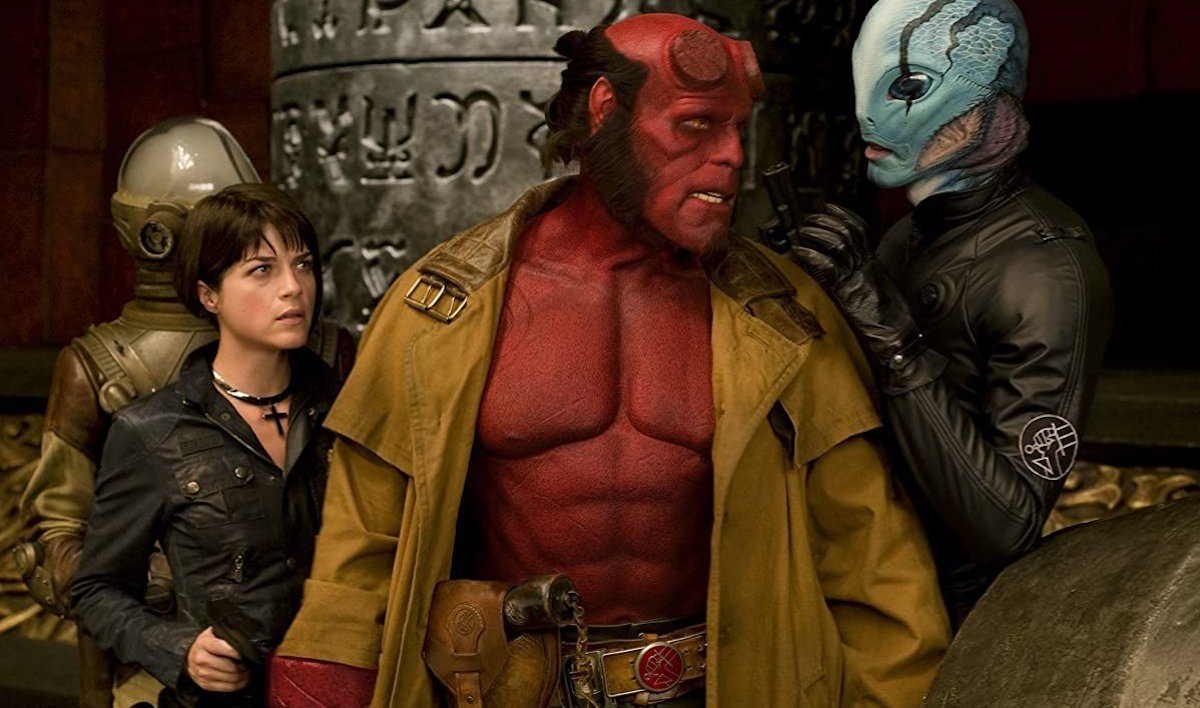
Like The Empire Strikes Back (1980) or The Dark Knight (2008), the sequel to Hellboy is consistently more engaging and ultimately more memorable than its predecessor. At turns dreamlike, bizarre, slapstick, and mesmerizing, no other live-action urban fantasy adventure is comparable to The Golden Army. Ron Perlman, Selma Blair, and Doug Jones deliver nuanced performances—even during the action sequences, which are beautifully realized. In the sequel, magical creatures hiding just beneath the surface of the human world want to reclaim their sovereignty. The elf Prince Nuada awakens the titular army of ancient machines to raze humanity to the ground so magical creatures can regain their freedom.
Del Toro employs practical effects like make-up and prosthetics with puppetry and animatronics, and seamlessly integrates them with CGI to create a world that is as believable as it is fantastical. The Golden Army features an elemental forest god that seemingly bleeds clover and moss, a Marrakesh-style night market for trolls, an ectoplasmic medium contained in a deep sea diving suit (voiced by Seth MacFarlane), and ornately textured costume design throughout. As tends to be the case with del Toro’s strongest work, the most effective moments are the interactions between characters, which are infused with a sense of humor that makes even their weirdest moments somehow relatable.
5. The Shape of Water (2017)
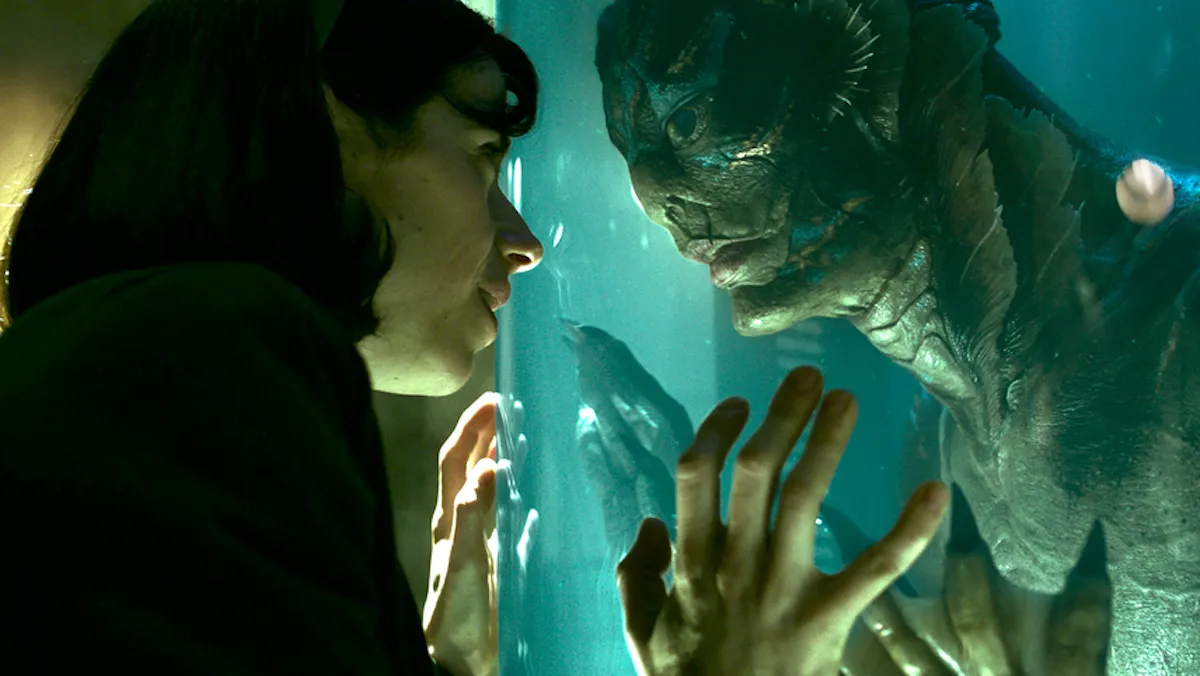
The Shape of Water is unique for having been nominated for—and winning—the most awards of any Guillermo del Toro film, but also for its multiple allegations of plagiarism. Allegations ranged from a lawsuit claiming that the plot is a point-by-point copy of the novel Let Me Hear You Whisper, to accusations by film critics who cited similarities to Amphibian Man and the novel by Alexander Belyaev it was based on, as well as claims of plagiarism of overall visual design by the French filmmaker Jean-Pierre Jeunet. Despite all these accusations, del Toro cites only Creature From the Black Lagoon (1954) and the films of Terry Gilliam as an influence, and the end result is a cinematic drama that is distinctly his own.
A mute woman named Elisa Esposito (Sally Hawkins) works as a cleaner in a government laboratory in Baltimore, where she finds a humanoid amphibian creature held captive. The two form a bond and eventually fall in love, but when the creature is scheduled for vivisection, Elisa helps him escape. Doug Jones performs elegantly as the amphibian man, and Hawkins and supporting actors Octavia Spencer and Richard Jenkins were each nominated for Academy Awards for their performances. The Shape of Water is as comfortable with its own strangeness as either of del Toro’s Hellboy films, but its most memorable feature is its tenderness.
4. Crimson Peak (2015)
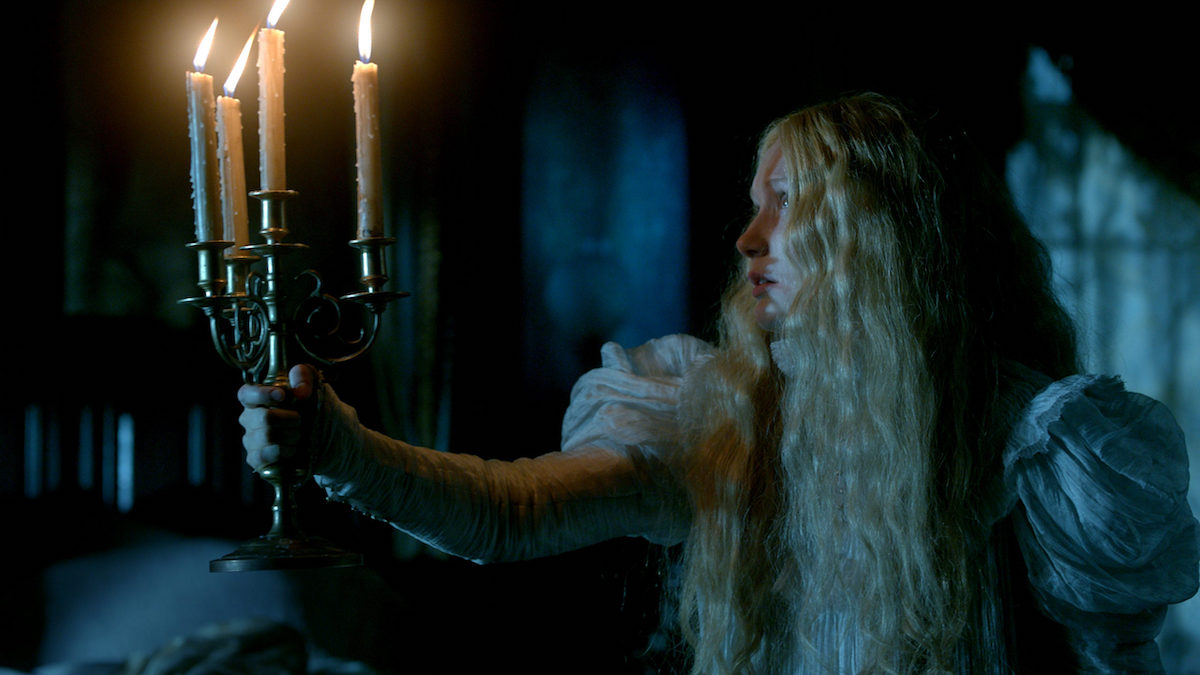
Guillermo del Toro describes Crimson Peak as a Gothic romance, “a mixture of a love story, melodrama, with atmosphere.” But as a ghost story with romantic themes and horror motifs, Crimson Peak is more than just a mix—it’s an elixir, brewed with equal parts trauma, loss, grief, and memory.
After her marriage to Sir Thomas Sharpe (Tom Hiddleston), Edith Cushing (Mia Wasikowska) moves to a Victorian mansion built on a small mountain of blood-red clay, where she meets Thomas’s sister Lucille (Jessica Chastain)—the keeper of the Sharpe family’s secrets, which include a series of increasingly gruesome ghosts. Crimson Peak is more of a mood piece than a character study, and the plot of the supernatural mystery is not the focal point of the narrative. Instead, this is a story of the way trauma informs our relationships.
The emotionality of the performances elevate Crimson Peak beyond a pastiche of its influences. The sumptuous visual design, from the lived-in interior architecture to the ornately detailed costumes and horrifying make-up effects, place this film among del Toro’s most beautifully embellished productions. Or, to quote Stephen King, Crimson Peak is “gorgeous and just fucking terrifying.”
3. Pinocchio (2022)
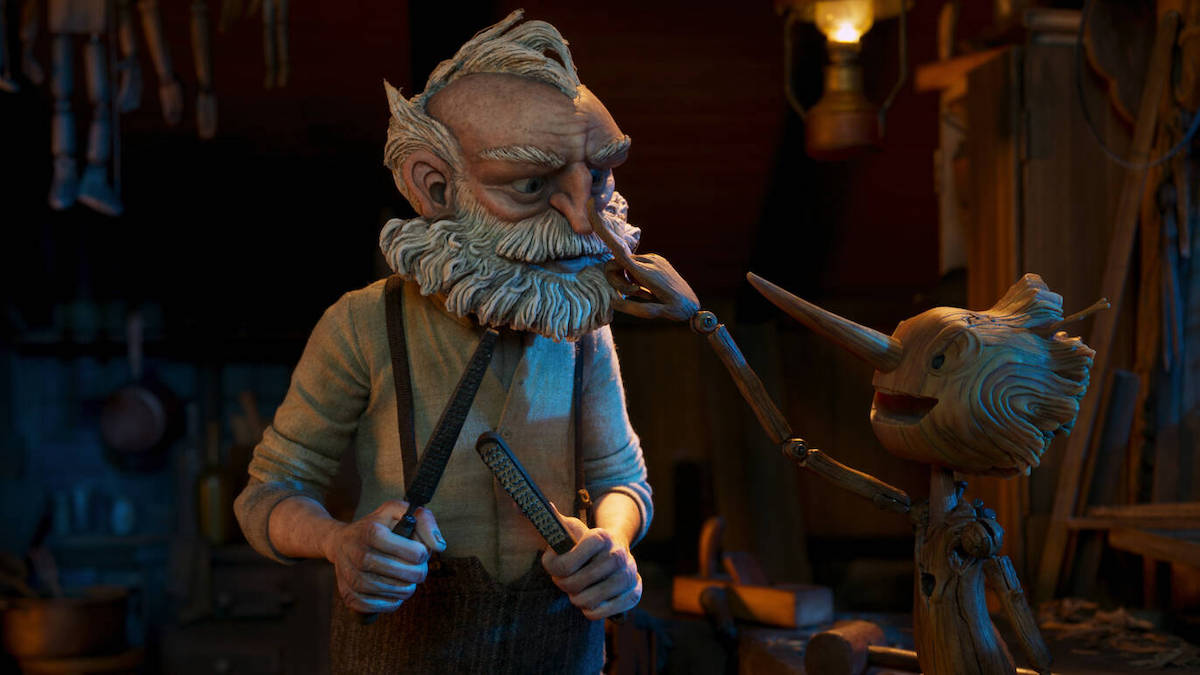
First announced in 2008, Pinocchio ultimately took 940 days to capture on film—10 times the average shooting schedule of a live-action feature. Del Toro’s first stop-motion animated film features truly unique character designs, and the motion is astonishingly fluid. It’s also del Toro’s first musical, featuring songs co-written with composer Alexandre Desplat and lyricist Roeban Katz. But the most significant detail of this production might be del Toro’s approach to the storytelling, which is both grounded in historical reality and fantastical beyond all expectations.
Del Toro saw Walt Disney’s animated adaptation of Pinocchio before he read Carlo Collodi’s novel, and was influenced as much by the horror elements of Disney’s version as he was by the absurdism of the source material. Del Toro changes the setting of the story to the years between World War I and World War II, when, under Benito Mussolini’s dictatorship, fascism was spreading across Italy. Written by del Toro and Patrick McHale, creator of Over the Garden Wall, this adaptation is as heartfelt as it is wild, and as grotesque as it is playful. Like Pan’s Labyrinth, the stunningly imaginative sequences function as explorations of life and death and as incisive commentary on the terror of fascism.
2. Pan’s Labyrinth (2006)

Pan’s Labyrinth (original title: El laberinto del fauno) places Guillermo del Toro’s work among the annals films set in the aftermath of the Spanish Civil War. While classics like The Spirit of the Beehive (1973) or Cría Cuervos (1976) are allegories of life after Francisco Franco’s dictatorship, Pan’s Labyrinth is set only five years after the end of the Spanish Civil War, when Franco first took power. Its fable-like story follows a circuitous path through the interior world of its protagonist, an 11-year-old girl named Ofelia (Ivana Baquero). Ofelia and her pregnant mother (Ariadna Gil) move to the countryside to meet her new stepfather (Sergi López), a captain in General Franco’s army who is hunting down the Republican guerrillas scattered there. Ofelia soon discovers a labyrinth where she meets a faun who promises her immortality if she completes three tasks. As she moves through each of the fantastical tasks, the brutality of war continues all around her.
Del Toro worked with David Martí and Montse Ribé, the special effects artists he collaborated with on The Devil’s Backbone and Hellboy, to create decrepit yet glistening creatures whose monstrosity reflect the reality of this period in Spanish history. Ivana Baquero’s performance as Ofelia is uncommonly subtle and deserving of every accolade she received. Doug Jones appears in six of del Toro’s 12 films to date—sometimes as more than one character—but his performance as the faun might be his magnum opus.
1. The Devil’s Backbone (2001)
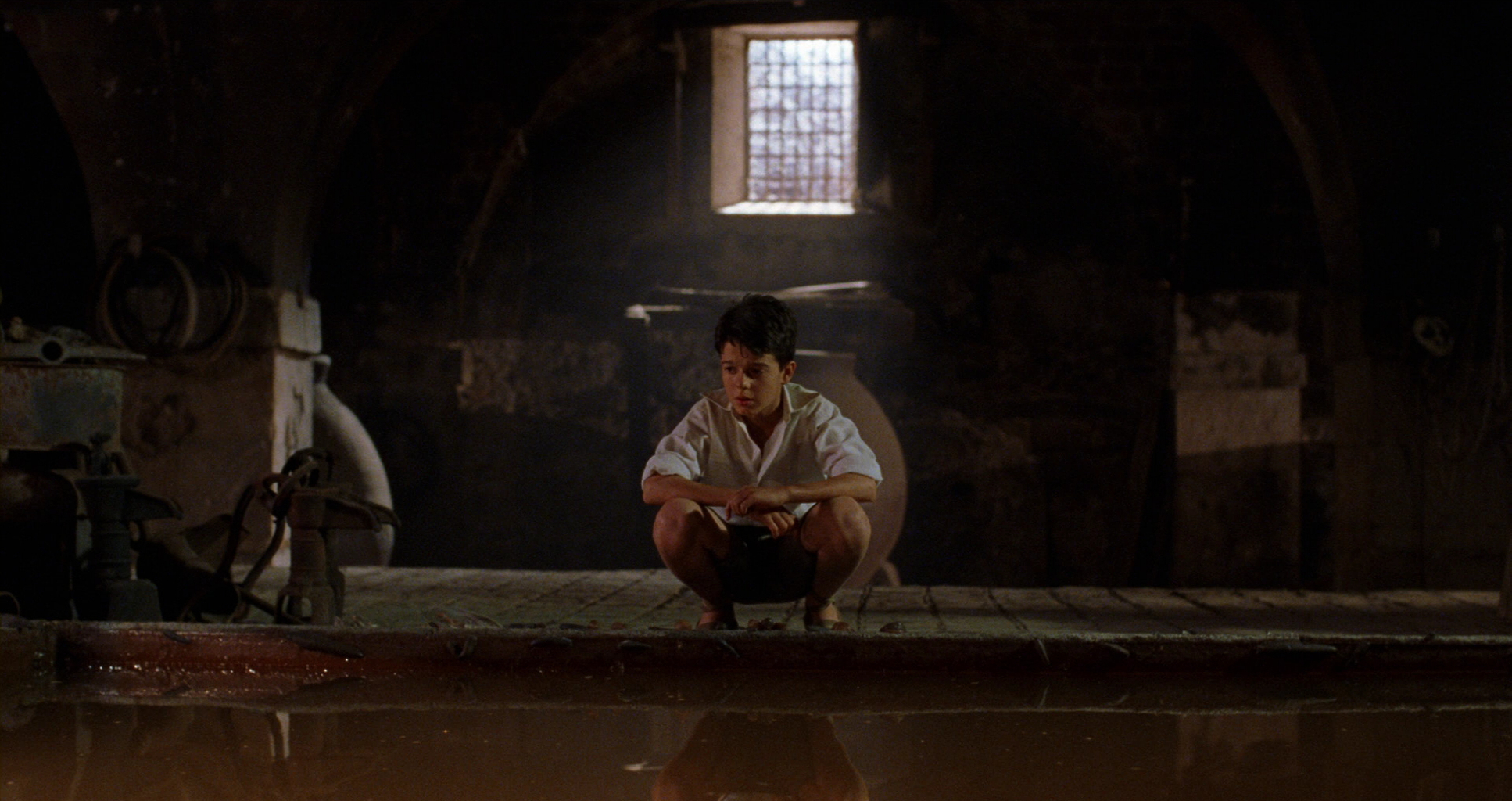
No other film by Guillermo del Toro encapsulates his visual style and narrative sensibilities as thoughtfully or as economically as The Devil’s Backbone (original title: El espinazo del diablo). This Gothic horror story was written by del Toro with David Muñoz and Antonio Trashorras. Its setting in Spain during the last year of the Spanish Civil War politicizes its allegories, and—like the most resonant ghost stories—the spectral beings themselves represent the harms caused by the culture that created them.
A 12-year-old boy named Carlos loses his parents in the war and is sent to an orphanage in the country, where he discovers the ghosts that haunt it. This is a sorrowful ghost story concerned more with the emotional motivation of its characters than with its scares, although del Toro cultivates a sense of dread that lingers in every scene. Its multiple plot lines and their themes of desire, loss, and grief—especially for children during wartime—are woven together seamlessly. The Devil’s Backbone was an international co-production between Spain and Mexico, and filmed in Madrid, which is lovingly photographed in a way that foretells del Toro’s later efforts in films like Pan’s Labyrinth and Crimson Peak. If a viewer could only see one entry in Guillermo del Toro’s filmography, The Devil’s Backbone should be it.
(featured image: Netflix)



